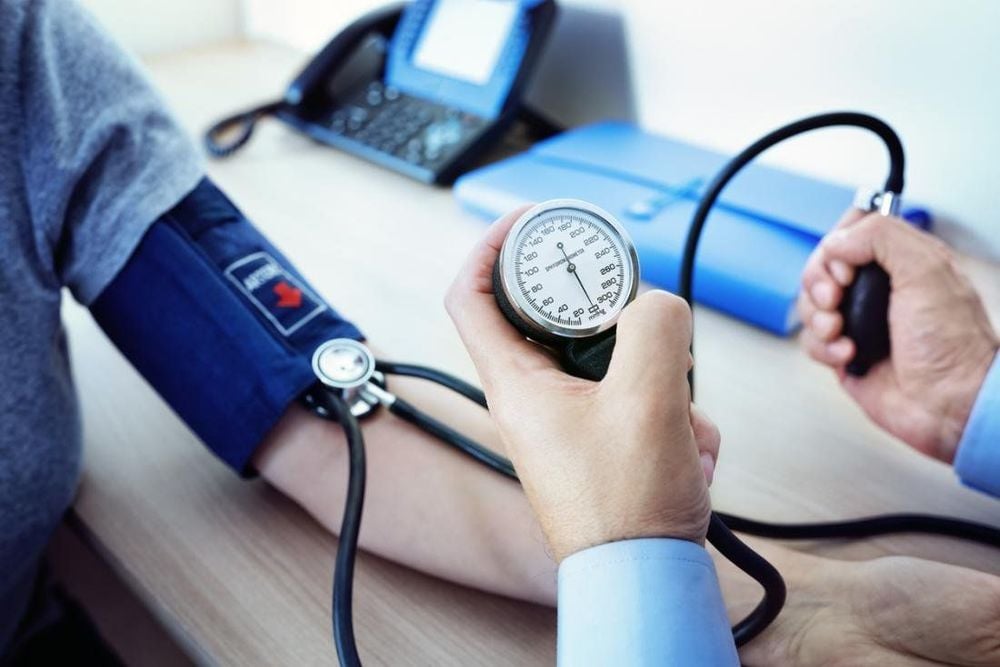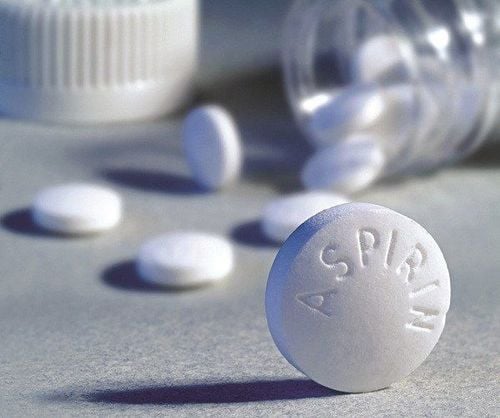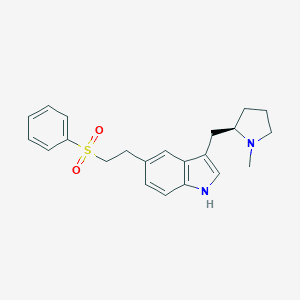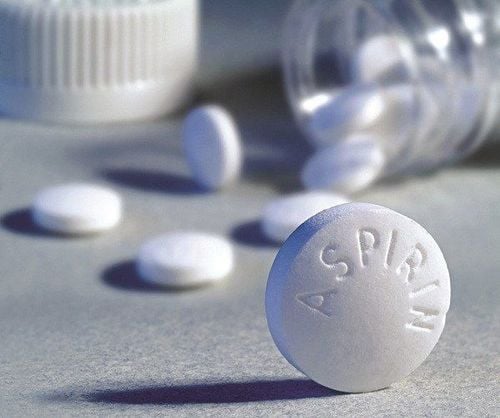This is an automatically translated article.
Cardiovascular exams are steps that examine the structure of the heart and blood vessels, done to help uncover any potential signs or risk factors that could lead to actual heart disease. When there's interest in what to look for in a cardiovascular exam and get it done early, people at higher risk of developing heart disease can learn to live healthier and live longer.
1. When should you go to a cardiologist?
Cardiovascular screening schedule recommendations based on each of the following timelines:
Weight and BMI : at annual physicals Blood pressure check: at least every 2 years, starting from age 20 Blood cholesterol test : at least every 4 to 6 years, starting at age 20 Blood sugar test : at least every 3 years, usually starting at age 40 to 45 Some people should go Have a heart health check-up at a younger age or more often than others when the following are found:
High blood pressure , high blood cholesterol or high blood sugar Have an irregular heart rhythm, for example such as atrial fibrillation Family history of cardiovascular disease Being overweight or obese Pre-diabetes or confirmed diabetes Having certain lifestyle factors, such as smoking, being sedentary Have complications during pregnancy, such as high blood pressure, preeclampsia, or gestational diabetes

Kiểm tra huyết áp là một vấn đề được bác sĩ đề cập khi thăm khám tim
2. What should be checked for cardiovascular examination?
During the cardiovascular health check, the doctor will inquire about the functional symptoms, i.e. subjective sensations of the self, look for physical symptoms through the examination process such as observing the skin. mucous membranes, listen to the heart and lungs. These data will form the basis of screening tests to assess cardiovascular health as well as cardiovascular risk factors.
Of these, cardiovascular risk factors are indeed an important part of the general cardiovascular examination. This means that the doctor needs to look for any suspicious signs of disease and consider the risk of developing cardiovascular disease in the future. Examples of cardiovascular risk factors include:
High blood pressure High blood cholesterol High blood sugar Being overweight and obese Having certain unhealthy lifestyle habits, such as smoking and alcohol use However, patients need to actively register for a cardiac exam immediately if they detect signs or symptoms of heart disease. These symptoms may include:
Feeling of chest pain or discomfort in the chest Anxiety Shortness of breath, shortness of breath Dizziness Fatigue, decreased exercise capacity Swelling in the legs or abdomen
3. Types of tests to check during cardiovascular examination
Routine cardiovascular health check-ups are an important part of preventive health care for adults in general and the elderly in particular. Accordingly, starting around age 20 or in some cases earlier, your doctor will likely recommend some routine screening tests. If the results of screening tests show signs of heart disease or a high risk of developing heart disease later in life, your doctor may order additional specialized tests, increasing the likelihood of early diagnosis and treatment. to prevent future disease progression.
Family history or lifestyle factors may also suggest when to start testing and how often it should be done during cardiac visits.

Khám tim mạch định kỳ là việc làm cần thiết giúp bảo vệ sức khỏe
Routine screening
Even without a history of heart disease, doctors recommend that people get screened for the following heart health features:
Check blood pressure and cholesterol, starting at 20 Years old Blood sugar test, starting at 40 to 45 years old Body mass index (BMI), based on body weight or waist circumference If you have certain risk factors for heart disease or a strong family history Certainly, doctors may encourage the initiation of cardiovascular screening at a younger age than the general population.
In addition, the patient may also require a highly sensitive C-reactive protein (hs-CRP) test. This test measures C-reactive protein (CRP), a marker of inflammation or infection that is associated with an increased risk of future heart attacks.
In-depth cardiovascular testing
If your doctor thinks there is a high chance of heart disease, the following tests may be ordered to evaluate your heart health:
Electrocardiogram: Small electrodes are pressed against chest wall and attached to a special machine, called an electrocardiogram. This machine records the electrical activity of the heart and provides information about heart rate and heart rate.
Cardiac exercise testing: Electrodes are applied to the chest and attached to the ECG machine. The patient is then asked to walk or run on a treadmill or pedal on a stationary bike while the doctor assesses the heart's response to physical stress.
Echocardiogram: The doctor uses an ultrasound machine to create moving pictures of the heart to see if there is a problem with the heart's pumping function and to evaluate the heart valves. Occasionally, echocardiography may also be ordered in the setting of exercise or certain inotropic medications to assess the heart's activity in response to stress.
Heart scan. A small amount of radioactive dye is injected into the bloodstream and travels to the heart. Your doctor will take pictures of your heart at rest and after exercise to find out how blood is circulating through your heart.
Cardiac CT scan to measure coronary calcification: The patient lies under a CT scanner with electrodes attached to the chest to record the electrical activity of the heart. The doctor uses a CT scanner to create images of the heart and check for calcium-containing plaque buildup in the coronary arteries.
Coronary CT angiogram (CTA): Similar to a cardiac CT scan to measure coronary calcification, a coronary CT scan will also require contrast media. The presence of contrast material in the heart makes it easier to see plaque buildup in the coronary arteries.
Catheter angiogram: A small catheter is inserted from the femoral artery in the inguinal crease or the radial artery at the wrist and threaded through the great artery to the heart. Contrast is injected through the catheter while the doctor looks under the fluorescein screen to see if the coronary arteries are narrowed or blocked.
4. How to check your heart health at home
Depending on medical history, your doctor may encourage each person to monitor their own cardiovascular function at home and risk factors according to the following characteristics:
Body weight or BMI with medical scales Measuring blood pressure at home with an electronic monitor Blood sugar with a capillary glucose meter Heart rate with fitness trackers or smart watches In addition, the doctor can also order Patients self-monitor their fitness activities, diet, or other lifestyle factors that may affect their heart health. Similarly, doctors can instruct patients to recognize and document any symptoms of developing heart disease.
In summary, listening to the heart and lungs, checking weight, blood pressure, blood cholesterol and blood sugar levels on a regular basis are important considerations for what to look for in a cardiac exam. In addition, the cardiologist needs to know about your medical history, lifestyle habits, and other factors that affect your chances of developing heart disease later in life. From there, tests can be ordered to assess heart function more accurately, especially when the doctor suspects the possibility of developing heart disease. Ultimately, the data gathered from the cardiovascular exam will help diagnose heart disease, guide lifestyle changes, and take medications or other treatments to manage heart disease in the future.
Cardiovascular Center - Vinmec Hospital not only responds well in terms of expertise, deploys many difficult and complicated techniques with reasonable cost, but also provides comprehensive care for cardiovascular patients.
Please dial HOTLINE for more information or register for an appointment HERE. Download MyVinmec app to make appointments faster and to manage your bookings easily.













